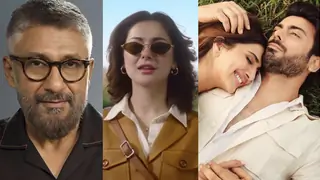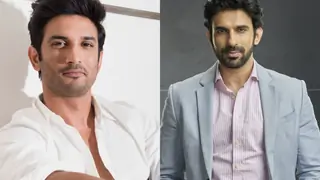Gwalior Gharana (vocal)
Nissar Husain Khan |
Krishnarao Shankar Pandit | |
Profile
The oldest of the khyal gharanas and one to which most others can and do trace the origins of their style is the Gwalior gharana. The rise of the Gwalior gharana started with the reign of the great Mughal emperor Akbar (1542-1605). The favourite singers of this patron of the arts, such as Miyan Tansen, first amongst the vocalists at the court, came from the town of Gwalior.
Some sources believe that Nathan Khan and Peer Baksh settled in Gwalior and evolved the style features that led to this gharana. Others claim that individuals named Nathan Peer Baksh and
Nathe Khan founded the gharana. The accepted version is that Nathan Peer Baksh left Lucknow (in Uttar Pradesh) to escape the professional rivalry with Shakkar Khan that had taken an ugly turn. He arrived in Gwalior with his grandsons
Haddu Khan and
Hassu Khan. Another great khayal singer, also originally from Lucknow, was Bade Mohammed Khan who brought the tn into khayal singing. Haddu and Hassu Khan further enhanced the style into the Gwalior gharana as we recognize it today. Haddu Khan's son, Rehmet Khan (1852-1922) was a widely acclaimed singer who liberated the Gwalior style from the methodical form it followed to the emotional style that he preferred. Apart from the emphasis on notes (swara), another distinguishing feature of the gharana is its simplicity because through simplicity alone can the singer and the listener arrive at the full beauty and impact of the raga. One means to this is of course the selection of well-known ragas so that the listener is saved the effort of trying to identify the raga. Attention can be focussed on the raga and the presentation of it. While the khayal singer does include raga vistar (melody expansion) and raga alankara (melody ornamentation to enhance the beauty and meaning of the raga), there is no attempt to include the tirobhava feature i.e. using melodic phrases to obscure the identity of the raga in the interest of adding interest or mystery to the listener's experience. The singing itself places bandish (the composition) at the heart of the presentation because of the gharana's belief that the full melody of the raga and guidance on its singing is provided by the bandish. The sthayi section is sung twice before the antara, to be followed by the slow tempo of the swara vistar (note expansion). This slow rendition of the notes is known as the behlava, and is sung from Ma in the lower register to Pa in the higher register, following the pattern of the aroha (ascent) and avaroha (descent) of the raga. The behlava is divided into the sthayi (from Ma to Sa) and antara (from Ma, Pa, or Dha to Pa of the higher register). The dugun-ka-alap follows in which groups of two or four note combinations are sung in quicker succession but the basic tempo remains the same. Thus the drumming pattern of the table (i.e. tabla theka) is left unaltered. The bol-alap is next in which the different words of the text are sung in different ways, to be followed by murkis in which notes are sung with ornamentation to a faster pace. Bol-tns entail the formation of melodic sequences with the words of the song. The other tns, including the gamak, follow. The sapat tn is important to the Gwalior style and refers to the singing of notes in a straight sequence and at a slow pace. Both dhrupad and khayal singing evolved in Gwalior and there are many overlaps. In the khayal style there is one form, mundi dhrupad, that incorporates all the features of dhrupad singing but without the mukhda. The Gwalior gharana usually prefers to begin ragas in the medium tempo (madhya laya) rather then the slow tempo (vilambit laya) as is the norm with other gharanas. The chosen ragas include Alahya-Bilawal, Yaman, Bhairav, Sarang, Shri, Hamir, Gaud-Malhar, Miya-ki-Malhar.
Artists
Major artists in alphabetical order
Balkrishnabua Ichalkaranjikar D V Paluskar Eknath Pandit Pandit Jal Balporia Krishnarao Shankar Pandit Laxman Krishnarao Pandit Malini Rajurkar Meeta Pandit Narayanrao Vyas Nissar Hussain Khan Omkarnath Thakur Rajubhaya Poochwale Ram Marathe Shankarrao Pandit Sharat Chandra Arolkar Sunanda Patnaik Ulhas Kashalkar V D Paluskar Pandit V.R. Athavale Pandit Vinaychandra Maudgalaya - Pandit Vinayakrao Parwardhan
Edited by vinnie-thepooh - 19 years ago



















